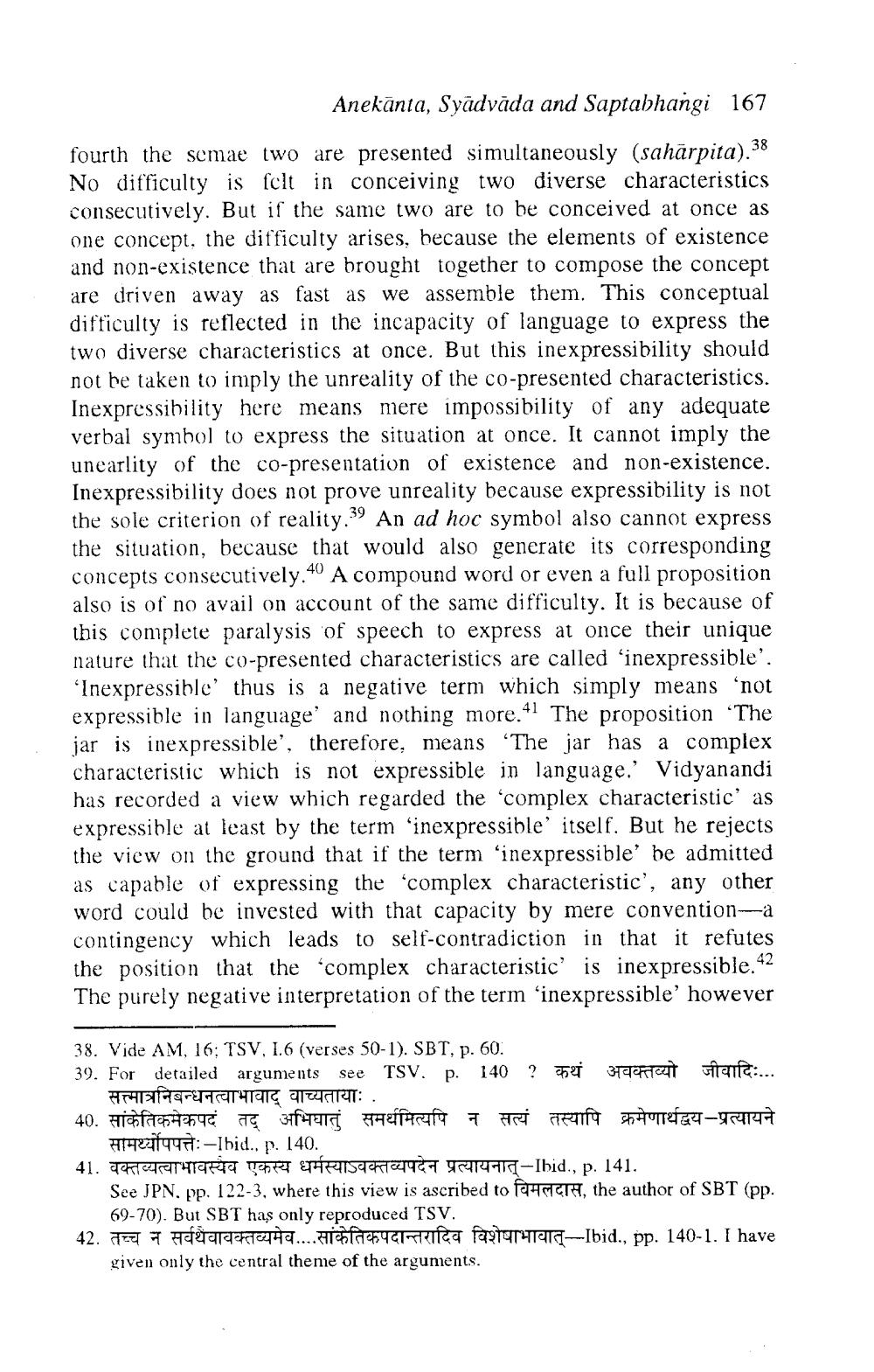________________
Anekānta, Syādvāda and Saptabhangi 167
fourth the semae two are presented simultaneously (sahārpita). 38 No difficulty is felt in conceiving two diverse characteristics consecutively. But if the same two are to be conceived at once as one concept, the difficulty arises, because the elements of existence and non-existence that are brought together to compose the concept are driven away as fast as we assemble them. This conceptual difficulty is reflected in the incapacity of language to express the two diverse characteristics at once. But this inexpressibility should not be taken to imply the unreality of the co-presented characteristics. Inexpressibility here means mere impossibility of any adequate verbal symbol to express the situation at once. It cannot imply the unearlity of the co-presentation of existence and non-existence. Inexpressibility does not prove unreality because expressibility is not the sole criterion of reality.39 An ad hoc symbol also cannot express the situation, because that would also generate its corresponding concepts consecutively.40 A compound word or even a full proposition also is of no avail on account of the same difficulty. It is because of this complete paralysis of speech to express at once their unique nature that the co-presented characteristics are called 'inexpressible'.
Inexpressible' thus is a negative term which simply means 'not expressible in language' and nothing more.41 The proposition "The jar is inexpressible', therefore, means “The jar has a complex characteristic which is not expressible in language.' Vidyanandi has recorded a view which regarded the 'complex characteristic' as expressible at least by the term 'inexpressible' itself. But he rejects the view on the ground that if the term 'inexpressible' be admitted as capable of expressing the complex characteristic', any other word could be invested with that capacity by mere convention-a contingency which leads to self-contradiction in that it refutes the position that the complex characteristic' is inexpressible.42 The purely negative interpretation of the term ‘inexpressible’ however
38. Vide AM, 16; TSV, 1.6 (verses 50-1). SBT, p. 60. 39. For detailed arguments see TSV. p. 140 ? 3Tercantitate:...
सत्त्मात्रनिबन्धनत्वाभावाद् वाच्यतायाः . 40. सांकेतिकमेकपदं तद् अभिघातं समर्थमित्यपि न सत्यं तस्यापि क्रमेणार्थद्वय-प्रत्यायने
1979:-Ibid., p. 140. 41. TRIARTHRITT Tepe ETRITS CRG CIRI-Ibid., p. 141.
See JPN. pp. 122-3, where this view is ascribed to FHGCTA, the author of SBT (pp.
69-70). But SBT has only reproduced TSV. 42. Teze 7 Header ....Hien Grey Kia FTSTATYTI-Ibid., pp. 140-1. I have
given only the central theme of the arguments.




